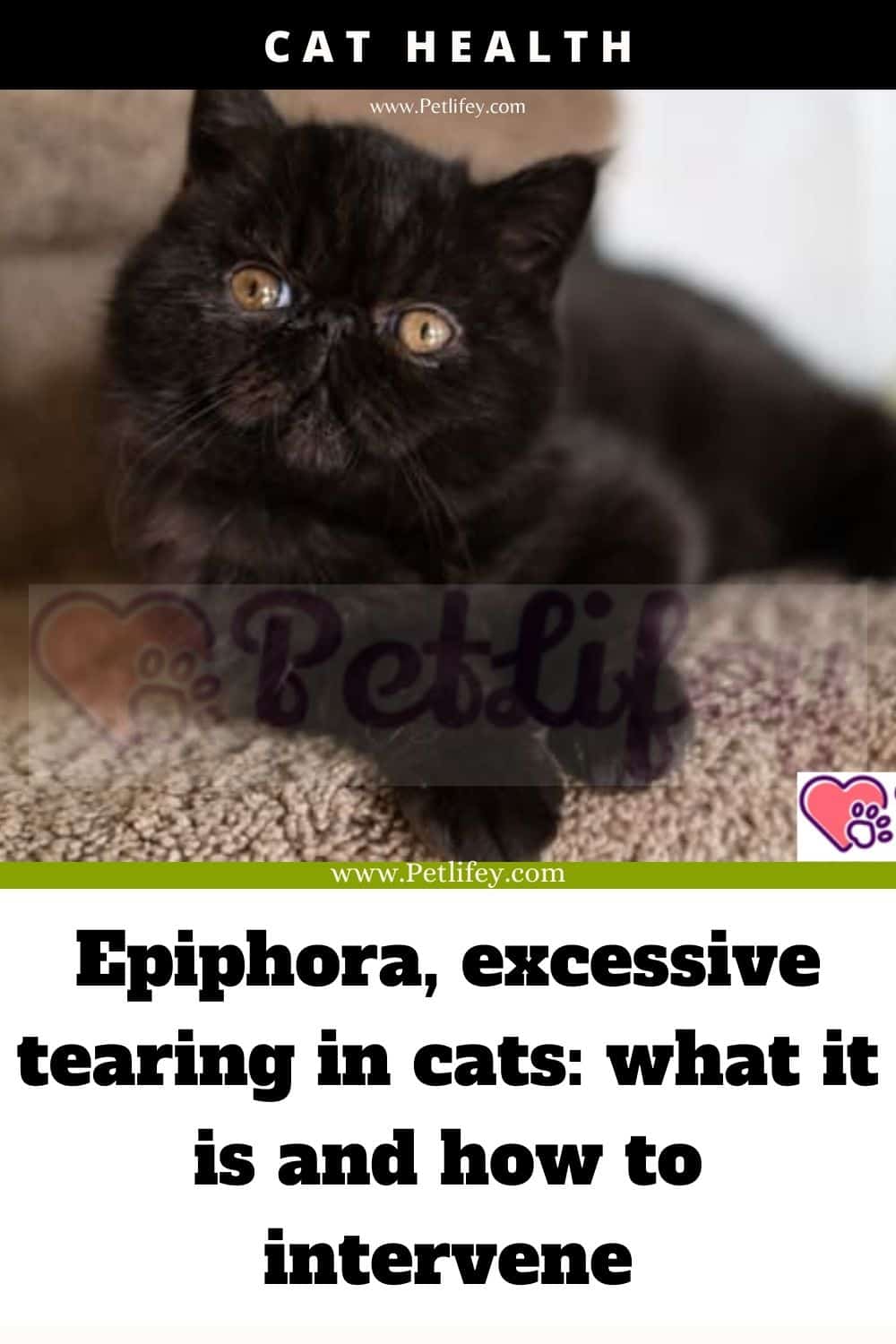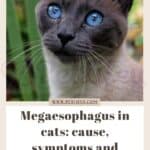Epiphora in Cats: Understanding Excessive Tearing and Intervention Strategies
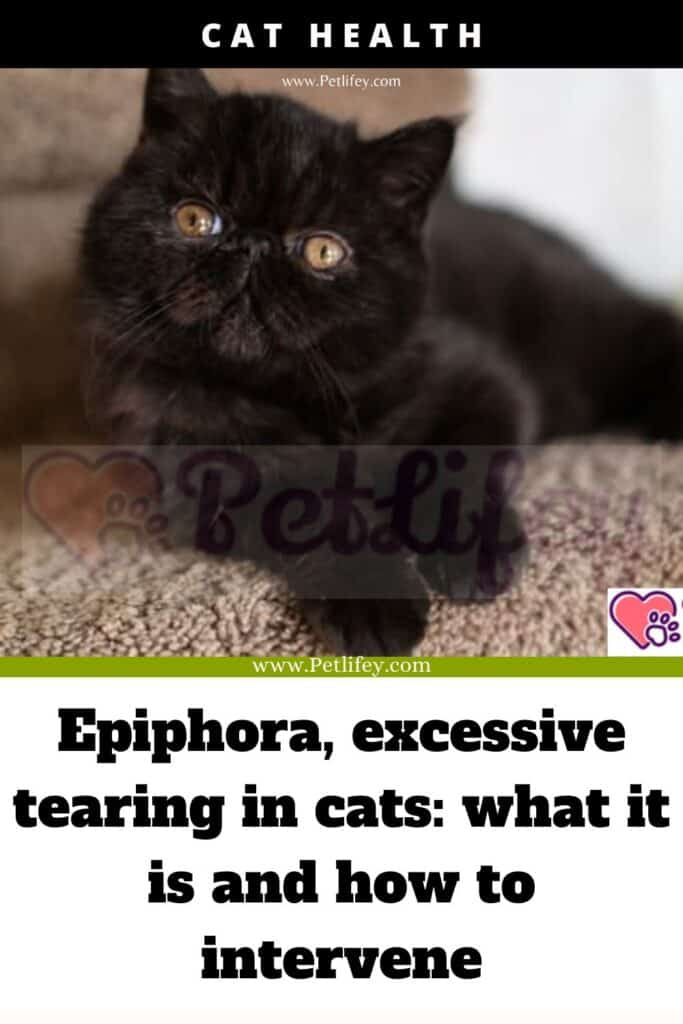
Epiphora is the medical term for excessive tearing, a condition you might observe in your cat. It manifests as an overflow of tears spilling onto the face rather than the normal, discreet tear drainage through the eyes’ natural system. The wetness around your cat’s eyes isn’t just a sign of emotion but indicates that something irregular is happening, either with the production of tears or their drainage.
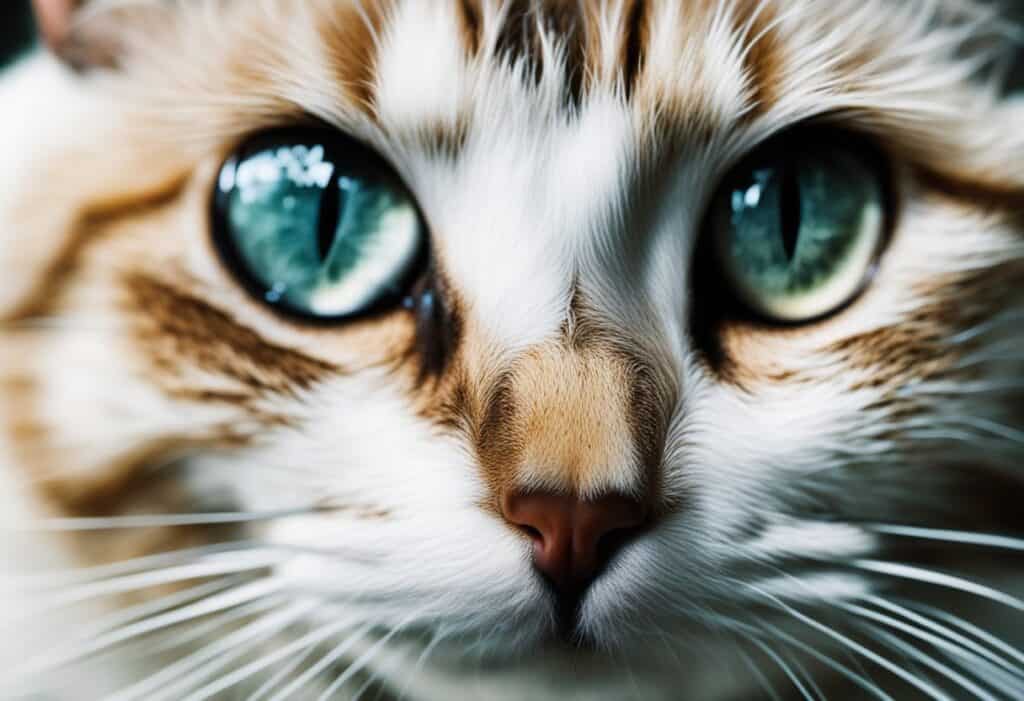
When you notice your cat’s eyes are watery, it’s essential to consider the balance between tear production and tear drainage. Normally, tears serve to lubricate the eye and remove debris. However, if your cat is producing too many tears or if there’s an obstruction preventing proper drainage, the tears may overflow, leading to epiphora. This overflow can result from various underlying causes, ranging from congenital issues to blockages in the tear ducts.
Understanding the root cause of your cat’s excessive tearing is crucial to providing the right intervention. Left unchecked, persistent wetness can lead to skin irritation or more serious eye conditions. Recognizing the possible symptoms of epiphora will prepare you to seek appropriate veterinary care, ensuring your feline friend’s eyes remain as healthy as possible.
Understanding Epiphora in Cats
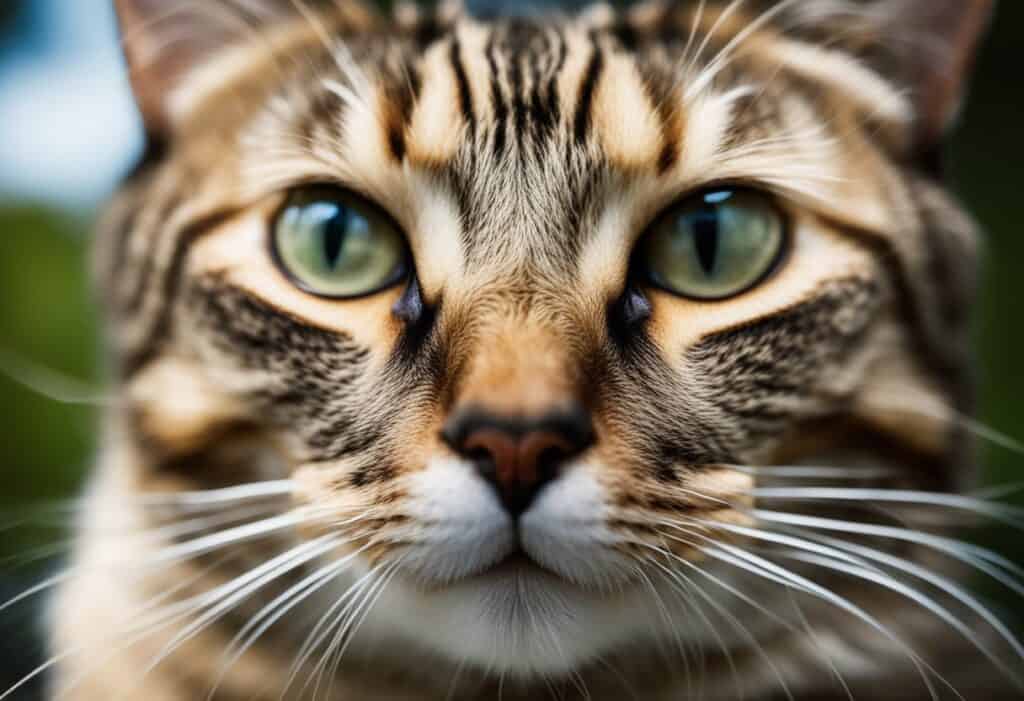
Epiphora in cats is a condition characterized by an abnormal overflow of tears, noticeable by wetness or staining around the eyes. In this section, you’ll learn about its definition and symptoms, understand its various causes, and discover how it disproportionately affects certain cat breeds.
Definition and Symptoms
Epiphora manifests as excessive tear production or watery eyes in cats, often leading to noticeable staining and redness around the eyes. Key symptoms include:
- Wetness beneath the eyes
- Reddish-brown staining of the fur
- Persistent watery eyes
The dampness can also lead to skin irritation or infection if not properly managed.
Causes of Excessive Tearing
Excessive tearing can occur due to either an overproduction of tears or an issue with tear drainage, typically through the tear ducts. Various factors contribute to this condition:
- Blockage of tear drainage pathways, such as the nasolacrimal duct
- Infections like conjunctivitis, which inflame the eye tissues
- Corneal ulcers that irritate and stimulate tear production
- Allergies to environmental irritants such as dust and debris
- Anatomical issues, for instance, entropion (inward rolling of the eyelid)
Impact on Different Cat Breeds
Certain cat breeds are more susceptible to epiphora, particularly brachycephalic breeds with flattened faces, such as Persians and Himalayans. These breeds often have abnormal tear drainage anatomy, making tear overflow a common issue.
- Flat-faced breeds: Prone to narrowed or malformed tear ducts
- Persians and Himalayans: Breeds with a higher risk for tear duct issues
Signs and Diagnosis of Epiphora
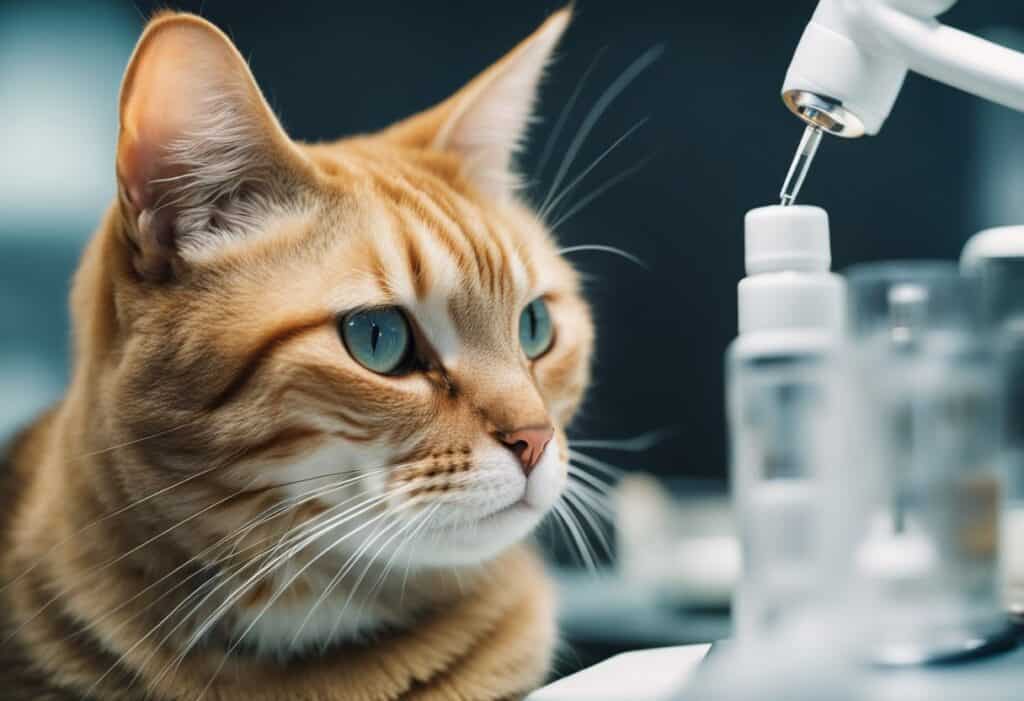
Epiphora, or excessive tearing, in cats can lead to visible tear staining and discomfort. Identifying the signs and obtaining a proper diagnosis are crucial for your cat’s health.
Visible Signs of Tearing
When your cat is experiencing epiphora, you’ll notice a consistent presence of tears on the face. This could lead to reddish-brown staining of the fur around the eyes. Your cat may also show signs of discomfort, redness, or squinting, indicating an issue with tear drainage.
- Excessive Tearing: Wetness around the eyes, with potential overflow onto the face.
- Tear Staining: Presence of reddish-brown streaks below the eyes.
- Additional Symptoms: Frequent blinking, squinting, or pawing at the eyes may occur.
Diagnostic Tests
Diagnosing epiphora involves a series of tests to assess tear production and duct patency. A common method is the Schirmer tear test, which measures the rate of tear production. A fluorescein dye test can help determine if there’s a blockage in the tear duct.
- Schirmer Tear Test: Measures tear production to rule out dry eye as a cause of excessive tearing.
- Fluorescein Test: A dye test that checks for a blocked tear duct or other obstructions.
When to See a Veterinarian
If you notice continuous tearing, discharge, or changes in eye appearance, it’s crucial to consult a veterinarian. An early diagnosis can prevent potential pain or complications from untreated conditions.
- Discharge or Pain: Presence of mucus or signs of pain around the eyes warrants immediate veterinary attention.
- Change in Eye Appearance: Persistent redness, swelling, or changes in the eye itself.
Treatment and Management
Effective treatment of epiphora in your cat hinges upon a targeted approach that addresses the specific cause of excessive tearing.
Medical Treatments
When dealing particularly with infections or inflammation leading to tear overproduction, your vet may prescribe antibiotics or steroid eye drops. For blockages or abnormalities in tear drainage, surgery may sometimes be necessary to correct the issue. It is crucial to treat any underlying respiratory infections as well, as they can contribute to excessive tearing.
- Antibiotic Ointment: Applied to combat bacterial infections.
- Steroid Eye Drops: Reduce inflammation and alleviate irritation.
- Surgery: For severe structural problems, performed under anesthesia to repair tear duct abnormalities or related eyelid issues.
Home Care and Maintenance
Your involvement in managing epiphora at home is vital for effective treatment. Regular cleaning of the eye area helps prevent the accumulation of discharge and reduces the risk of infection.
- Cleaning: Use a soft, damp cloth or specially designed pet wipes.
- Eye Drops/Saline: Can help flush out irritants; always use as directed by your vet.
It is also beneficial to maintain a stress-free environment as stress can exacerbate your cat’s symptoms.
Preventing Complications
Preventative measures can mitigate complications such as scarring, ulcers, and persistent irritation which might arise from inadequately managed epiphora.
- Monitor for changes: Keep a watchful eye on symptoms to detect any deterioration early.
- Regular Check-ups: Periodic veterinary visits to assess the effectiveness of treatment and adjust as needed.
Ensuring consistent follow-up will help manage your cat’s condition and prevent long-term damage.
Special Considerations for Specific Conditions
When addressing epiphora in cats, it’s essential to consider specific conditions that may alter management approaches. The breed, presence of chronic conditions, and underlying diseases can notably influence treatment efficacy and prognosis.
Brachycephalic Breed Challenges
Brachycephalic breeds, such as Persians and Himalayans, often have shallow eye sockets which can lead to an ineffective tear film. These structural peculiarities make tear drainage challenging and predispose these cats to eye irritation and inflammation. Entropion, where the eyelashes turn inward and rub against the cornea, is a common issue and may require surgical intervention by a veterinary ophthalmologist. Regular cleaning and protecting the skin around the eyes can help manage symptoms.
Chronic Conditions and Surgery
Cats with chronic eye conditions like conjunctivitis, corneal ulcers, or glaucoma may experience secondary epiphora. Persistent inflammation or pain alters tear production and drainage, leading to excessive tearing. In cases where conservative management fails, surgery could be necessary to correct conditions such as distichia (abnormal lash growth) or ectopic cilia (lashes growing from an abnormal spot). These surgical procedures aim to relieve discomfort and prevent further injury or trauma to the cornea.
Addressing Underlying Diseases
Epiphora often signals underlying diseases. For example, anterior uveitis, inflammation of the front part of the eye, or uveitis resulting from systemic infections, can increase tear production. It’s crucial to identify and treat the primary disease to control epiphora effectively. Watch out for symptoms like redness, swelling, or pain in the eye, and consult with a veterinarian if these occur. Early intervention can prevent potential eye injuries and alleviate discomfort.
Conclusion
Epiphora in cats, characterized by excessive tearing, often indicates an underlying condition that requires attention. Recognizing the symptoms such as watery eyes and tear-stained fur is critical for prompt intervention.
In managing epiphora, first seek veterinary advice to identify the cause. Treatment may range from simple home care, like keeping the eyes clean, to medications or even surgery for underlying issues. For blockages in the nasolacrimal duct, a common cause, a veterinary professional might suggest a flushing procedure.
Prevention, although not always possible, includes maintaining good eye hygiene and promptly addressing any eye infections or inflammation. Regular check-ups can help in early detection and treatment, potentially preventing complications.
Remember, early and appropriate treatment not only improves comfort but also helps maintain your cat’s eye health. Always follow the guidance of your veterinarian when it comes to treatment options and management strategies.

